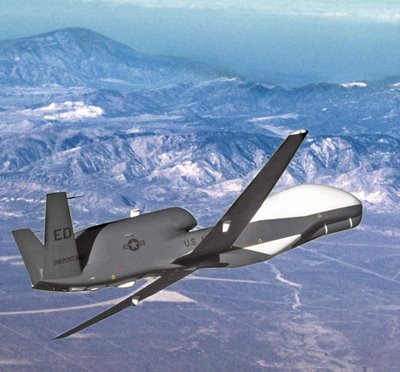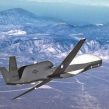
CIA Drone Strikes in Pakistan’s FATA Region and the “Loss” of Actionable Intelligence: A Pashtun Perspective
Publication: Terrorism Monitor Volume: 8 Issue: 15
By:

The Federally Administered Tribal Area (FATA) of northwestern Pakistan is under the de facto joint control of al-Qaeda and Taliban militants, except for the tribal agency of South Waziristan, which was recently retaken from the Mahsud Taliban network by the Pakistani army. Previously, the Taliban have been retaking the areas cleared by the army, like Bajaur and Mohmand. In response, the US has repeatedly attacked the militants in FATA with Predator drone strikes. One critic of the drone strikes, Marc Thiessen, has argued in Foreign Policy against this airborne assassination campaign on the grounds that the United States is killing terrorists that the CIA could instead capture and interrogate to get valuable information. [1]
It is of course an excellent idea to capture terrorists alive, obtain intelligence through interrogation and disrupt their plans for terrorism. It has been done before with the capture of such high value targets as Khalid Shaykh Muhammad and Ramzi bin al-Shibh, both of whom were captured in Karachi after they fled FATA. But could the policy of capturing al-Qaeda be implemented in a place as inaccessible FATA, an area largely under the control of the Taliban and al-Qaeda?
The CIA has mounted joint operations with Pakistan’s Inter-Services Intelligence (ISI) to hunt down senior terrorist leaders and take them to the United States for interrogation. Among those captured were men like Abu Zubaydah, Ammar al-Baluchi and others. There have also been unilateral ISI captures, such as the recent capture of the Taliban’s number two, Mullah Baradar, who was captured outside of FATA in Karachi (Daily Times [Lahore], February 15). There have to date, however, been no captures of high-ranking al-Qaeda or Taliban figures in the lawless mountains of FATA. Could such joint operations be conducted in FATA? If yes, why have there not been any thus far? If there have been any, why weren’t they successful?
Take the case of Waziristan in FATA. It is a territory that stretches over an 11,327 sq km area. There the Taliban and al-Qaeda have training camps, weapons depots, computer institutes and Shari’a courts; in short, a parallel government. They also have guesthouses where terrorists from all over the world come to stay for training or consultation. The local population is overpowered and helpless in the face of the powerful al-Qaeda and Taliban movements. Their tribal leaders have been slaughtered and strict Shari’a law enforced.
Of course capturing a small number of Waziristan-based terrorists would not eliminate the threat that they pose to the world. The strategic use of violence is the only apparent means available to destroy the terrorist infrastructure and kill the key terrorists running the Islamist Emirate. There are three avenues for the applications of violence in the tribal region:
1) Military Operations by the Pakistan Army
The Pakistani military has had some successes in the agencies of Bajaur and South Waziristan, but at a cost. The military caused considerable collateral damage in the form of hundreds of civilians killed, property worth millions of dollars destroyed and hundreds of thousands displaced – yet the military did not manage to kill any leading Taliban commanders. [2]
Moreover, the people of FATA argue that under the garb of military operations, the ISI had in fact strengthened the terrorists (Daily Times, February 6). It was during these operations that much of the tribal leadership was eliminated by the Taliban and military. In many places, areas taken by the military have been returned to the militants through negotiations. Sadly, many local Pashtuns who have been caught up in the Pakistani military’s clumsy invasions of Bajaur and South Waziristan have become disappointed in the army, and are terrified of it as well as the Taliban. Their perception is that Pakistani intelligence agencies have no desire to destroy the Taliban in their native land.
2) U.S. Ground Forces in FATA
The other possibility is for U.S. forces stationed in neighboring Afghanistan to enter FATA and physically destroy al-Qaeda and Taliban strongholds in the area. Would they be able to successfully achieve this task? The terrain is difficult, there are tens of thousands of hardened enemy fighters there and U.S. forces may suffer great human loss. Even then, it could not be said for sure that they would be able to eradicate the militants’ safe havens.
The people of FATA have suffered greatly under the control of the militants and in the military operations of Pakistan. Any collateral damage by American forces would not help the United States in terms of public diplomacy. Furthermore, Pakistan may not agree to the entry of U.S. ground forces into FATA. To do so would be political suicide for the Zardari government and would inevitably weaken Pakistan’s already weak democracy.
3) Drone Attacks
Pakistani authorities routinely denounce the U.S. drone attacks on FATA and demand that the United States halt them. (The News [Islamabad], May 24, 2009). They argue that the attacks are a violation of Pakistan’s sovereignty and that the robotic assassination campaign has proven to be counter-productive in the war against terror by uniting the militants and the tribal people. [3]
There are, however, many reports that the drone strikes on FATA are carried out from air bases within Pakistan (The News [Islamabad], October 27, 2008; Times, February 19, 2009). U.S. officials say the strikes are carried out under an informal agreement with Islamabad that allows Pakistani leaders to criticize them in public, but Pakistan denies the existence of any such agreement (Reuters, January 13).
The drone strikes have killed several dozen al-Qaeda and Taliban leaders in FATA and the local people inform that the terrorists have sleepless nights due to the drone attacks. Far from being driven into the hands of the Taliban, many local people support the strikes (see Terrorism Monitor, February 19). People living in FATA where the drones operate particularly appreciate the precision of drone strikes. They say that when a drone appears in the skies above them, they are not disturbed and carry on with their usual business because they are sure that it does not target the civilians. The same people however run for shelter when a Pakistani jet appears in the skies because of its indiscriminate firing.
The author of this paper has interacted with hundreds of people in FATA on this issue. Most of them are confident that the drone technology is capable of eliminating the terrorists in FATA with little or no collateral damage. If the elimination of terrorists is the objective and there are no ulterior motives, then the United States has the backing of the majority of the people of FATA. It is highly impractical for the CIA, the U.S. military or even the Pakistani military to capture high value targets in this region, leaving drones as the only option.
Conclusion
Al-Qaeda terrorists are spread all over the world and in many places they may be captured alive for investigations. FATA is not one those places. It is too remote, the United States is unlikely to introduce ground forces into this hostile land and the Pakistani army’s sledgehammer approach has proven to be counter-productive. Simply put, force has to be used to demolish the Islamist Emirate in FATA, but it has to be precise. Drone attacks are described by many FATA Pashtuns as a God-send and an appropriate method of eliminating the militants. The destruction of the Taliban’s Islamist Emirate would send a strong message to the terrorists around the world that they will not be allowed to create sanctuaries that are safe from the reach of their enemies.
Notes
1. Marc Thiessen, “Dead Terrorists Tell No Tales, Is Barack Obama killing too many bad guys before the U.S. can interrogate them?” February 8, 2010 https://www.foreignpolicy.com/articles/2010/02/08/dead_terrorists_tell_no_tales?page=0,1
2. “Cost of Conflict in FATA,” Planning and Development Department, FATA Secretariat, Peshawar, Pakistan, April 2009, https://www.fata.gov.pk/downloads/costconflict.pdf
3. Ibid





